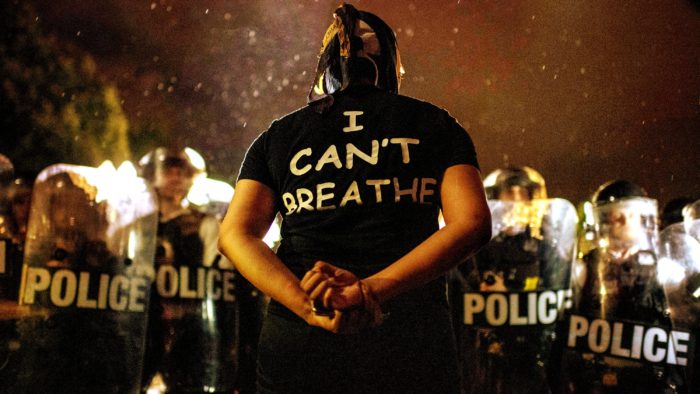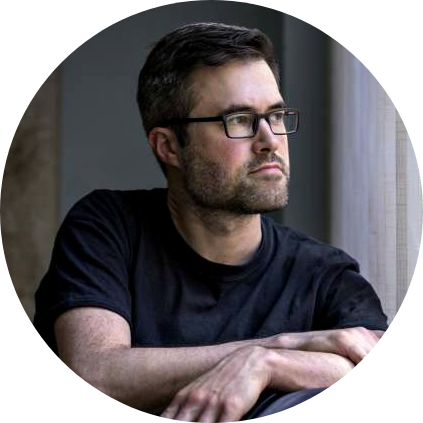
By Mark Bray, Washington Post
Did the tragic video of the police killing of George Floyd in Minneapolis throw you into a fit of rage? Of sadness and despair? Did it make you want to burn down a police station?
Whether it did or (more likely) did not, you might be among the many Americans who sympathize with the outburst of anger behind the overturning of police cruisers and the smashing of storefronts in cities across the country in the wake of Floyd’s death, even if you disagree with property destruction. Though “violent” protest tactics are generally unpopular, they command attention and force us to ask: How did we get here?
President Trump, Attorney General William P. Barr and their allies have a simple and convenient answer: “It’s ANTIFA and the Radical Left,” as Trump tweeted on Saturday. “In many places,” Barr explained, “it appears the violence is planned, organized and driven by anarchic … and far left extremist groups using Antifa-like tactics.” “Domestic extremists,” Sen. Marco Rubio (R-Fla.) tweeted, are “taking advantage of protest to further their own unrelated agenda.” After another night of destruction that included the burning of the former slave market called the Market House in Fayetteville, N.C., Trump upped the stakes on Sunday by declaring that “the United States of America will be designating ANTIFA as a Terrorist Organization.”
Trump’s reckless accusations lack evidence, like many of his claims. But they also intentionally misrepresent the anti-fascist movement in the interest of delegitimizing militant protest and deflecting attention away from the white supremacy and police brutality that the protests oppose.
[Trump’s announcement] actually suggests a tacit acknowledgment of popular sympathy with the grievances and tactics of the protesters: If torching malls and police stations were sufficient on their own to delegitimize protests, there would be no need to blame “antifa.”
Short for anti-fascist in many languages, antifa (pronounced AN-tifa) or militant antifascism is a politics of social revolutionary self-defense applied to fighting the far right which traces its heritage back to the radicals who resisted Benito Mussolini and Adolf Hitler in Italy and Germany a century ago. Many Americans had never heard of Antifa before masked antifascists smashed windows to shut down Milo Yiannopoulos in Berkeley, Calif., in early 2017 or confronted white supremacists in Charlottesville later that year — when a fascist murdered Heather Heyer and injured many more with his car in a way that frighteningly presaged the New York police officers who drove into protesters on Saturday in Brooklyn.
Based on my research into antifa groups, I believe it’s true that most, if not all, members do wholeheartedly support militant self-defense against the police and the targeted destruction of police and capitalist property that has accompanied it this week. I’m also confident that some members of antifa groups have participated in a variety of forms of resistance during this dramatic rebellion. Yet it is impossible to ascertain the exact number of people who belong to antifa groups because members hide their political activities from law enforcement and the far right, and concerns about infiltration and high expectations of commitment keep the sizes of groups rather small. Basically, there are nowhere near enough anarchists and members of antifa groups to have accomplished such breathtaking destruction on their own. Yes, the hashtag “#IamAntifa” trended on Twitter on Sunday, suggesting a very broad support of the politics of antifascism. Yet there is a significant difference between belonging to an organized antifa group and supporting their actions online.
Trump’s declaration seems impossible to enforce — and not only because there is no mechanism for the president to designate domestic groups as terrorist organizations. Though antifa groups exist, antifa itself is not an organization. Self-identified antifa groups like Rose City Antifa in Portland, Ore., the oldest currently existing antifa group in the country, expose the identities of local Nazis and confront the far right in the streets. But antifa itself is not an overarching organization with a chain of command, as Trump and his allies have been suggesting. Instead, largely anarchist and anti-authoritarian antifa groups share resources and information about far-right activity across regional and national borders through loosely knit networks and informal relationships of trust and solidarity.
And in the United States, antifa have never killed anyone, unlike their enemies in Klan hoods and squad cars.
Though the specific tradition of militant antifascism inspired by groups in Europe came to the United States in the late 1980s with the creation of Anti-Racist Action, a wide variety of Black and Latinx groups, such as the Black Panthers and Puerto Rican Movimiento de Liberación Nacional (MLN), situated their struggle in terms of antifascism in the 1970s and 1980s. Expanding the picture further, we can trace the broader tradition of collective self-defense against white supremacy and imperialism even farther back through resistance to indigenous genocide and the legacy of militant black liberation represented by Malcolm X, Robert F. Williams, C.L.R. James, Ida B. Wells, Harriet Tubman and slave rebellions. This black radical tradition, black feminism and more recent abolitionist politics influenced by organizations like Critical Resistance and Survived and Punished clearly inform the actions of protesters far more than antifa (though there are black antifa and others who have been influenced by all of the above).
Trump is conjuring the specter of “antifa” (while Minnesota Gov. Tim Walz blamed “white supremacists” and “the cartel”) to break the connection between this popular groundswell of anti-racist and black activism that has developed over recent years and the insurrections that have exploded across the country in recent days — which put police brutality in full view whether we agree with how it got there or not. Paradoxically, this move actually suggests a tacit acknowledgment of popular sympathy with the grievances and tactics of the protesters: If torching malls and police stations were sufficient on their own to delegitimize protests, there would be no need to blame “antifa.”
This is not the first time Trump or other GOP politicians have called for antifa to be declared a “terrorist” organization. So far, such calls have amounted to little more than rhetoric — but they carry an ominous potential. If antifa groups are composed of a wide range of socialists, anarchists, communists and other radicals, then declaring antifa to be a “terrorist” organization would pave the way to criminalizing and delegitimizing all politics to the left of Joe Biden.
But in the case of the George Floyd protests, right-wing attempts to blame everything on antifa — perceived by many to be predominantly white — evince a kind of racism that assumes that black people couldn’t organize on this deep and wide of a scale. Trump and his allies also have a more specific motive: If the flames and broken glass were simply blamed on “antifa” or “outsiders” — as if anyone had to travel very far to protest — then the urgency would shift from addressing the root causes of Floyd’s death to figuring out how to stop the shadowy boogeyman Trump rails against. Even if you disagree with property destruction, it’s easy to see the chain of events between Floyd’s death and burning police cars. Trump’s misinformation aims to mislead us all.

Mark Bray is a historian of human rights, terrorism and politics in modern Europe. He is the author of Antifa: The Anti-Fascist Handbook, Translating Anarchy: The Anarchism of Occupy Wall Street, and the co-editor of Anarchist Education and the Modern School: A Francisco Ferrer Reader. He is currently a lecturer at Dartmouth College and a member of Black Rose/Rosa Negra.
For more from Mark Bray we recommend “Is Trump’s National Emergency a Step Toward Fascism?” and the podcast interview “History and Ideas of Anarchism: Mark Bray on Rev Left Radio.”
This article was originally published by the Washington Post.
